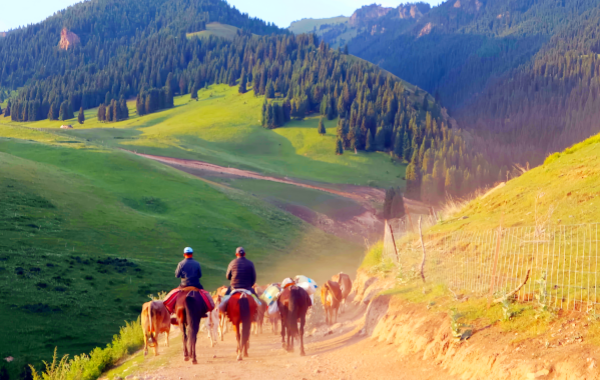Kazak
Introduction
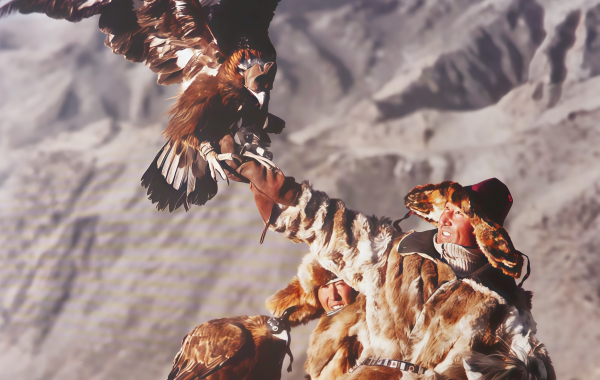
The Kazak Nationality is a unique and culturally vibrant ethnic group in China. Renowned for their nomadic heritage, beautiful traditional costumes, and rich oral literature, the Kazak people have a long and fascinating history. Their cultural traditions have been passed down through generations, contributing significantly to the diverse cultural mosaic of China and attracting the attention of scholars and tourists from around the world.
 History
History
Origin
The Kazak people are believed to have originated from the ancient nomadic tribes in the Central Asian steppes. Over time, through a series of migrations, mergers, and interactions with other ethnic groups, they gradually formed their own distinct ethnic identity. Some theories suggest that they have connections with the ancient Wusun, Kangju, and other tribes in the region.
Development
Historically, the Kazak people were mainly nomadic herders, relying on horseback riding and livestock breeding for their livelihood. They raised horses, cattle, sheep, and camels, moving their herds across the vast grasslands in search of fresh pastures according to the seasons. This nomadic lifestyle developed a close - knit community with a strong sense of self - reliance and adaptability. They also engaged in some trade activities with neighboring ethnic groups and regions, exchanging livestock products for grain, handicrafts, and other necessities.
Modern Times
In modern times, with the establishment of modern states and the implementation of policies to settle nomadic populations, many Kazak people have gradually transitioned from a purely nomadic lifestyle to a semi - nomadic or settled one. The government has invested in infrastructure development in Kazak - inhabited areas, improving transportation, education, and healthcare facilities. At the same time, efforts have been made to preserve and promote Kazak culture, including language, traditional music, dance, and handicrafts.
 Population
Population
Quantity
As of the latest census data, the Kazak population in China is approximately 1.6 million, making them one of the smaller but culturally distinctive ethnic minorities in the country.
Distribution
The Kazak people are mainly concentrated in the Xinjiang Uygur Autonomous Region, especially in the northern and western parts of Xinjiang, such as Ili, Tacheng, and Altay areas. These regions are characterized by vast grasslands and suitable climatic conditions for livestock breeding, which are in line with the traditional economic activities of the Kazak people. A small number of Kazaks also live in Gansu's Aksay Kazak Autonomous County and Qinghai's Haibei Tibetan Autonomous Prefecture.
 Economy
Economy
Traditionally, the Kazak economy was based on nomadic animal husbandry. Horses played a central role in their daily life, not only as a means of transportation but also as a symbol of wealth and status. Cattle provided milk, meat, and leather, while sheep were the main source of wool and meat. In addition to livestock breeding, the Kazak people also engaged in some hunting activities to supplement their food supply and obtain animal furs.
In modern times, the Kazak economy has diversified. While animal husbandry remains an important sector, many Kazak people are now involved in agriculture, especially in areas where settled farming is possible. They grow crops such as wheat, barley, and corn. Tourism has also become an emerging industry, with the unique nomadic culture, beautiful natural landscapes, and traditional festivals attracting an increasing number of tourists. Handicrafts, including leather products, silverware, and embroidery, are also important sources of income for some Kazak artisans.
 Culture
Culture
Language and Script
The Kazak language belongs to the Turkic language group within the Altaic language family. It has several dialects. The Kazak people use the Arabic - based Old Turkic script historically, but in modern times, the Cyrillic script was widely used in the Soviet - influenced period. In China, the Kazak language is now written using the Latin - based Kazak script, which helps in the promotion of education and cultural transmission among the Kazak people.
Religious Beliefs
Islam (Sunni) is the predominant religion of the Kazak people. It has a profound influence on their daily life, social customs, and cultural traditions. Mosques are important religious and social centers in Kazak communities, where people gather for prayers, religious education, and social activities. Religious festivals such as Eid al - Fitr and Eid al - Adha are celebrated with great enthusiasm, involving special prayers, feasts, and family gatherings.
Clothing
Traditional Kazak clothing is designed to suit the nomadic lifestyle and the local climate. Men typically wear a long - sleeved shirt, a vest, and wide - legged trousers, often made of sheepskin or wool. They also wear a hat, usually made of fox fur or sheepskin, which provides protection from the cold and the sun. Women's clothing is more colorful and elaborate, featuring a long dress with intricate embroidery, a vest, and a headscarf. The embroidery patterns often include floral and geometric designs, symbolizing beauty and good luck. Women also wear jewelry such as earrings, necklaces, and bracelets, which add to their elegance.
Literature
Kazak literature has a rich oral tradition, including epic poems, folk tales, proverbs, and songs. The most famous Kazak epic is "Manas," which is a long narrative poem that tells the story of the hero Manas and his descendants, reflecting the history, culture, and values of the Kazak people. Folk tales are passed down from generation to generation through oral storytelling, often featuring animals as characters and conveying moral lessons. Proverbs are an important part of Kazak wisdom, providing concise and insightful expressions of life experiences and social norms.
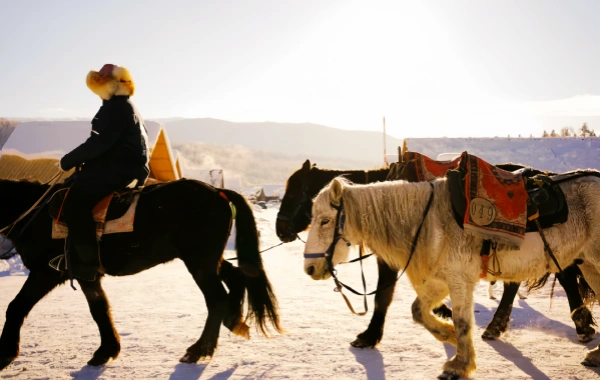 Transportation
Transportation
In the past, due to their nomadic lifestyle, the Kazak people relied mainly on horses for transportation. Horses were not only fast and agile but also well - adapted to the grassland environment. They also used camels in some desert or semi - desert areas for long - distance travel and carrying heavy loads. In modern times, with the development of infrastructure, motorcycles, cars, and buses have become common means of transportation in Kazak - inhabited areas. However, horses still hold a special place in Kazak culture and are often used in traditional festivals and sports events.
 Science
Science
Medicine
Traditional Kazak medicine combines herbal remedies with spiritual and magical practices. Kazak healers, known as "baksy," have extensive knowledge of local herbs and their medicinal properties. They use these herbs to treat various diseases, often accompanied by rituals and incantations to invoke the help of supernatural forces. Traditional Kazak medicine also emphasizes the balance between the body, mind, and spirit, and the harmony between humans and nature. In recent years, there has been growing interest in integrating traditional Kazak medicine with modern healthcare systems to provide more comprehensive medical services for the Kazak people.
Calendar
The Kazak people have their own traditional calendar, which is closely related to agricultural and livestock - breeding activities as well as natural phenomena. The calendar is used to determine the best times for herding, migration, and farming. It also marks important cultural events and festivals, helping the Kazak people to maintain their cultural traditions and sense of time. The traditional calendar is based on a combination of lunar and solar cycles and is often supplemented by observations of animal behavior and plant growth.
 Art
Art
Music
Kazak music is characterized by its melodious tunes and unique vocal styles. Folk songs are an important form of Kazak music, covering a wide range of topics such as love, nature, and history. Traditional Kazak musical instruments include the dombra (a two - stringed plucked instrument), the kobyz (a bowed string instrument), and the sybyzgy (a reed flute). Kazak music often expresses the people's emotions, such as joy, sadness, and longing, and reflects their life experiences and cultural values. During festivals and celebrations, Kazak people gather together to sing and play music, creating a lively and festive atmosphere.
Dance
Kazak dance is energetic and expressive, with movements that are closely related to daily life and work. Traditional Kazak dances include the "Black Horse Dance," which imitates the movements of a horse, and the "Eagle Dance," which symbolizes strength and freedom. These dances are often performed during festivals, weddings, and other social gatherings, bringing people together in a joyful and harmonious way. Dancers wear colorful costumes and perform with enthusiasm, showcasing the Kazak people's artistic talents and cultural vitality.
Architecture
In the nomadic period, the Kazak people lived in yurts, which are portable, round - shaped tents made of a wooden frame covered with felt. Yurts are well - adapted to the nomadic lifestyle, as they can be easily assembled and disassembled, and they provide good insulation against the cold and heat. In settled areas, Kazak people build houses using local materials such as wood, stone, and mud. These houses often have a traditional layout, with separate rooms for living, sleeping, and storage. The interior decoration is usually simple but reflects the Kazak aesthetic sense, with colorful carpets and wall hangings.
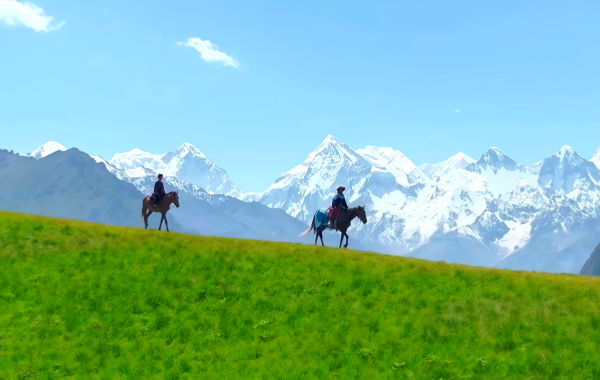 Landscape
Landscape
The Kazak - inhabited areas are characterized by vast grasslands, snow - capped mountains, and clear rivers. The Ili Grassland, one of the most famous grasslands in China, is home to many Kazak herders. The beautiful natural scenery provides a rich source of inspiration for Kazak artists and poets. The grasslands are also important ecological areas, supporting a diverse range of plant and animal species. In addition, the unique geological formations and landscapes in some areas, such as the Kanas Lake in Altay, add to the charm of the Kazak - inhabited regions.
Arts and Crafts
Kazak arts and crafts are renowned for their fine workmanship and unique designs. Traditional Kazak crafts include leather processing, silver - making, embroidery, and wood - carving. Kazak leather products, such as saddles, harnesses, and shoes, are known for their durability and exquisite craftsmanship. Silver - making produces beautiful jewelry, including earrings, necklaces, and bracelets, often decorated with intricate patterns. Embroidery is used to decorate clothing, bedding, and household items, with colorful threads creating beautiful floral and geometric designs. Wood - carving is used to decorate furniture, musical instruments, and religious objects, showcasing the Kazak people's artistic skills.
 Custom
Custom
Etiquette
Kazak etiquette is based on hospitality, respect, and politeness. When guests arrive at a Kazak home, they are usually greeted warmly with a handshake and a smile. The host will offer tea, milk tea, or wine to the guests, and it is customary to accept these offerings as a sign of respect. During meals, guests are often served the best food, and it is polite to praise the host's hospitality. The Kazak people also place great importance on greetings, and young people should show proper respect to elders by using formal titles and polite language.
Marriage Customs
Kazak marriage customs are rich in tradition and ritual. Marriages are often arranged by the families of the bride and groom, but the consent of the couple is also important. The wedding ceremony is a grand event that involves several steps, including engagement, dowry delivery, and the wedding feast. During the ceremony, there are various traditional rituals, such as the bride and groom drinking from the same cup to symbolize their unity, and the bride's family giving gifts to the groom's family. The wedding feast is a time for family and friends to gather and celebrate, with music, dancing, and delicious food.
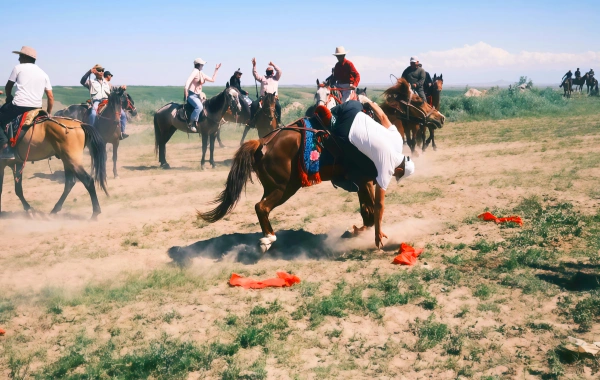 Festivals
Festivals
The Kazak people celebrate many important festivals throughout the year. The Nabat Festival is one of the most significant, marking the beginning of the new year in the Kazak traditional calendar. During the festival, people clean their houses, prepare special foods, and participate in various cultural activities such as horse - racing, wrestling, and singing and dancing competitions. Other festivals include the Corban Festival and the Eid al - Fitr, which are religious festivals celebrated with prayers, feasts, and family gatherings. The Kazak people also celebrate some traditional festivals related to livestock - breeding, such as the Sheep - Shearing Festival, which is a time to celebrate the harvest of wool and the well - being of the sheep.
Diet
Kazak cuisine is characterized by its rich flavors and high - protein content. Staple foods include meat (especially mutton, beef, and horse meat), dairy products (such as milk, yogurt, and cheese), and flour - based products like noodles and bread. Common dishes include roast mutton, hand - pulled noodles with mutton soup, and kazan chicken. The Kazak people have a tradition of drinking milk tea, which is made by mixing tea with milk and salt, providing energy and nourishment. They also like to drink homemade wine, especially during festivals and social gatherings.
Funeral Customs
Kazak funeral customs are based on respect for the deceased and the belief in an afterlife. When a person dies, the family will hold a series of funeral rituals, including washing the body, dressing it in new clothes, and placing it in a coffin. Religious leaders or elders will perform prayers and rituals to guide the soul of the deceased to the afterlife. Family and friends will gather to pay their respects and offer condolences, and a funeral feast is held to honor the memory of the deceased. The mourning period varies depending on the relationship with the deceased, and relatives and friends will continue to offer support to the bereaved family during this time.
What Our Clients Say?
Based on 10,000+ traveler reviews






